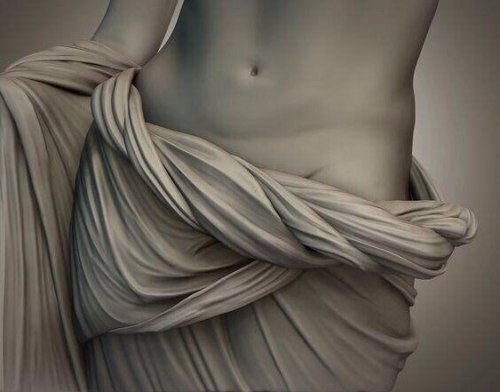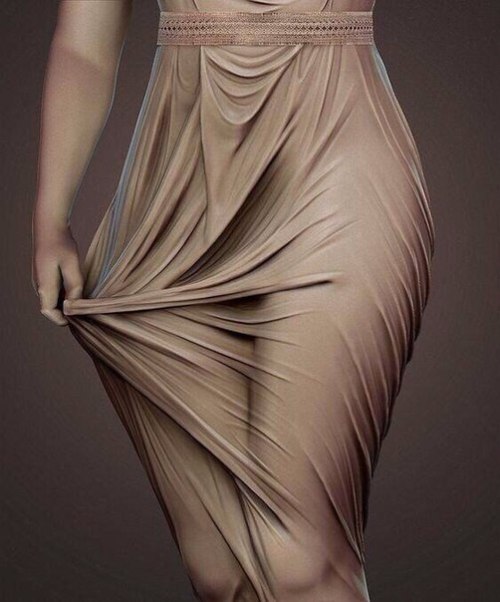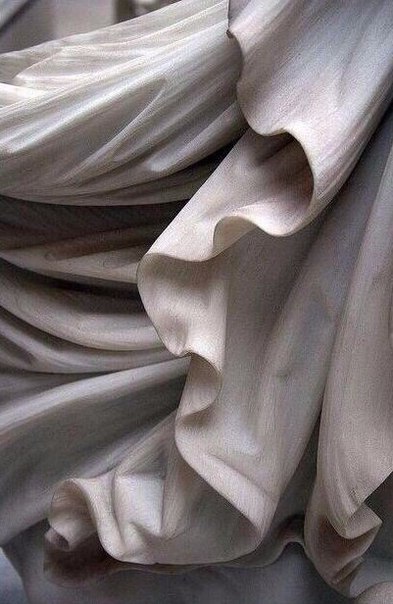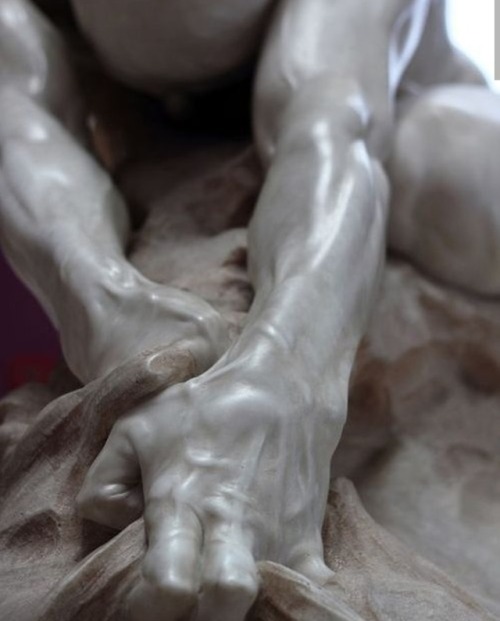Just-looking-for-some-science

More Posts from Just-looking-for-some-science and Others

If you stare at one dot you’ll see that the image isn’t turning at all. Learn why illusions confuse you in our NEW VIDEO: https://youtu.be/0NPH_udOOek
[Illusion via http://bit.ly/2gvqZnb]
What’s Up For September 2018?
Outstanding views Venus, Jupiter, Saturn and Mars with the naked eye!

You’ll have to look quickly after sunset to catch Venus. And through binoculars or a telescope, you’ll see Venus’s phase change dramatically during September - from nearly half phase to a larger thinner crescent!

Jupiter, Saturn and Mars continue their brilliant appearances this month. Look southwest after sunset.

Use the summer constellations help you trace the Milky Way.

Sagittarius: where stars and some brighter clumps appear as steam from the teapot.

Aquila: where the Eagle’s bright Star Altair, combined with Cygnus’s Deneb, and Lyra’s Vega mark the Summer Triangle.

Cassiopeia, the familiar “w”- shaped constellation completes the constellation trail through the Summer Milky Way. Binoculars will reveal double stars, clusters and nebulae.

Between September 12th and the 20th, watch the Moon pass from near Venus, above Jupiter, to the left of Saturn and finally above Mars!

Both Neptune and brighter Uranus can be spotted with some help from a telescope this month.

Look at about 1:00 a.m. local time or later in the southeastern sky. You can find Mercury just above Earth’s eastern horizon shortly before sunrise. Use the Moon as your guide on September 7 and 8th.

And although there are no major meteor showers in September, cometary dust appears in another late summer sight, the morning Zodiacal light. Try looking for it in the east on moonless mornings very close to sunrise. To learn more about the Zodiacal light, watch “What’s Up” from March 2018.

Watch the full What’s Up for September Video:
There are so many sights to see in the sky. To stay informed, subscribe to our What’s Up video series on Facebook.
Make sure to follow us on Tumblr for your regular dose of space: http://nasa.tumblr.com
Farewell online privacy
Making a dragon:

This is actually a very complicated question @milesrev, and I will answer it to the best of my abilities so bear with me, this is going to be a long one. First things first we would have to select a variety of dragon that we wished to create, and that alone is easier said than done, after that we have to decide what traits does it need to really be a dragon? To deal with the first question, I’ll be using the following handy guide to cover my bases.

Now the basic question of how do we make a dragon, there are two methods I could see, either make it from absolute scratch (nearly imposible) or we could edit already existing animals (could actually be done) and after I go through the “basic builds” I’ll cover some special features.
European dragon: There is only one group of extant animals that has even a vaugely similar body structure, the genus Draco, such as Draco volans (below)

Now, it should be mentioned that Draco volans is two things, small, and a glider, not a flyer, but that doesn’t necessarily have to be the way it stays. If you further elongated the gliding ribs, pulled the first four ribs down so they covered more of the organs, and gave the gliding ribs some more muscle attachments, you could get it to fly under its own power. Beyond a few other adjustments you can make later, this is as close as I can think of to getting a european dragon look.
Fae dragon: Alright, this one is pretty easy. If you want a lizard-y dragon, make a miniature of the European dragon. If you want insectoid wings, then its an insect, or other arthropod, and that doesnt have to mean that your dragon is any less cool.
Drake: I’d say the best combination for this would be to take something like Varanus albigularis ionidesi: black throated monitor (below)

give it a neck similar to Varanus glauerti: the Kimberly rock monitor (below)

and change it’s shoulders and hips to be more like those of a big cat’s.
Hydra: I’m sorry Dave, I cannot do that. You see, while multiheaded animals do occasionally exist, its almost always the results of a conjoined twin, and these rarely survive.
Kirin/qilin: Alright, so this one is a bit different, as this one is mammal based. So, based on the mythological description of the Qilin (which I am, for the sake of my own sanity, going to be considering separate from the chinese unicorn), the Qilin is a kind, benevolent creature with a horse like body, antlers/horns, and carp-like scales, and usually shown with sharp teeth. So, for my Qilin, I’ll pick an herbivore as a base, as it is always shown to have some type of hornlike growth, we know it is not a sexually selected characteristic, we also need an herbivore with fangs, and, since it is a mammal, the scales are probably hair. First off, base animal, I’m going to pick the Budorcas taxicolor: the Takin (below), an animal you may not have heard of.

This stocky critter is actually a close relative to goats, but I think it’s a good fit as it has a similar body shape to sculptures of Qilin, and boasts impressive agility, and horns are present in both sexes. Now, the horns obviously need to be a little different, and the best match I could find is in Antilocapra americana: the pronghorn (below)

alright, I bet you’re thinking, “surely they can’t find a fanged herbivore to throw in the mix”. Well that’s where you’re wrong kiddo! meet Hydropotes inermis: the water deer (below)

Tadaa! A deer with fangs. One last trait, scales. Guess what, I’ve got an answer for that too, Smutsia gigantea: the giant pangolin (below)

and that covers all the basics for building a Qilin.
Lung dragon: For the body I’ll use the species Eumecia anchietae: the western serpentiforme skink for the base, as it has a good shape for this. (see below)

to get it airborne, I’d say use a combination of Chrysopelea paradisi: the paradise tree snake (below)

and most likely Ptychozoon kuhli: the flying gecko (below).

The paradise tree snake has the ability to splay out its ribs, which allows it to parachute through the air, but we need the genes for the flying geckos tail flaps as well other wise the body won’t have enough lift to even parachute, adding in additional flaps, such as from the flying gecko, and a verticle undulation could (theoretically mind you) provide enough lift to get airborne.
Lindwurm type A: Believe it or not there already is an animal with a similar build, Bipes biporus; the Mexican worm lizard (below)

sure, it’s not a perfect match, but if you made it bigger, and gave it a longer neck, you’d be pretty dang close.
Lindwurm type B: This one isn’t shown in the above diagram, but here’s a picture of what I’m talking about.

Now, while you could make something like this, in no way would it make any sense or provide any benefits, so I’m not even going to bother working on it.
Salamander: Okay, so usually the mythical one is six legged, sometimes it has more, so it’s either an insect, or it’s like a centipede, and that’s really about it, you can’t make it fire proof unfortunately.
Wyrm: Alright, this one’s easy, you get yourself a snake, pretty much any snake (I’d use something like Ophiophagus hannah: the king cobra as it has a nice rearing posture in my opinion) and you make it really big. Tadaaaaaa.
Basilisk: Alright, Basilisk, king of serpents (from the greek basiliskos meaning little king). What are the traits? It needs to be a big snake, have nasty long range venom, and have a mitre (think pope hat) like crest (which is what the beast was named for, allegedly) Naja mossambica: the mosambic spitting cobra fulfills the long range venom requirement. For the funny head crest, I’d say Chamaeleo calyptras: the veiled chameleon (below) is a good fit.

As for size, I’ll leave that up to the creators discretion.
Sea serpent type A: Alright, so there already exist extant, legitimate sea serpents, known as Oarfish, but I’m designing a reptile one anyway. For the base, I’ll use my favorite sea snake, Hydrophis platurus: the yellow belllied sea snake (below)

to make our buddy actually kind of scary, let’s scale it up to Python reticulatus reticulatus: the mainland reticulated python (below) size, at roughly 10 meters (33 feet was the record)

to give it an aquatic edge up, lets give it Erpeton tentaculatum: the tentacled snake (below) sensory organs

which would give our sea serpent something like a lateral line. Now, sea serpents actually need to drink fresh water, but other marine reptiles don’t, so lets give it salt excretion glands, like sea turtles have.
Sea serpent type B: Anyone who has seen jurassic world is familiar with the look of this one, as it’s built like the “classic” mosasaur, as in something like this

interestingly, a very close relative of mosasaurs exists today, the monitor lizards! Perhaps the most similar of extant monitors would be (in my opinion) Varanus salvator: the Asian water monitor (below)

which already lives a semi-aquatic life style, for fins, I would probably pick those of Carettochelys insculpta: the pignosed turtle (below)

and then, obviously salt excretion glands so it can actually live at sea.
Sea serpent type C: The final type of sea serpent is going to be Loch Ness monster style. So, how do we build a “plesiosaur”? Well, I would actually use a turtle to build it, several turtles infact, to start with, an almost perfect base, Dermochelys coriacea: the leatherback sea turtle (below)

there are a few key features making this the best base, it is completely marine, it has probably the most hydrodynamic design of all extant marine reptiles, they can inhabit cold waters (ranging into Alaska), they can reach 2.2 meters (7 feet long!), they can dive to over 1,000 meters (3,000 feet), they can dive for up to 70 minutes, and can reach speeds of up to 35 Km/hr (22 mph). Now, there are two main issues, first, obviously it doesn’t have a long neck, and second, it feeds exclusively on soft bodied prey (weak jaws). For both of those issues I would use genes from Chelodina longicollis: the Easter snake necked turtle, which has a neck that can be 60% of it’s total body length (below)

Quetzalcoatl: Alright, big feathery snake without wings. So, this time we’ll start with our reticulated python as the base, so we’ve got a 10 meter snake, given the original mythology, we’d probably want it’s feathers to be of Pharomachrus mocinno: the resplendant quetzal (below)

or we could take a page from Atheris hispida: the spiny bush viper (below)

and finally, for flight, a more advanced form of the same mechanism as the Paradise tree snake.
Amphithere: Alright, time for the difficult one. So, obviously, we’d be using Bipes bisporus as a base again, and for the feathers, you can use whatever you want, but you’ll also need the splayed rib genes from the paradise tree snake, and to change the front legs to wings, which I’d recomend using those of Chauna torquata: the southern screamer (below)

because, as you see, they’ve got claws, so it might help the animal clamber around.
Wyvern type A: So type A are going to be wyverns that walk on all fours, so for this, you can really pick just about any lizard you want as a base. Unfortunately, pteradactyls are extinct (at least, as far as I’m aware), and no other animal uses it wings as legs, right? Wrong. there are exactly three known to science, particularly Desmodus rotundus: the vampire bat (below)

also, they’re positioned similarly enough to reptile limbs that I really don’t think it would be much of an issue.
Wyvern type B: Alright, so, if the previous walked on all fours, this one has to be bipedal. For this one, we have to use a bird as the base (no extant solely bipedal reptiles) and because just why not, let use the terrifying Casuarius casuarius: the southern cassowary (below)

it’s only the third largest extant bird species. Slap a nice big lizard tail on it, give it bat wings, and exchange the feathers for scales, and you’ve got a monster.
Cockatrice: Get a chicken, give it a lizard tail and bat wings and you’re done.
SPECIAL FEATURES:
SIZE: Go big or go home right? For your trait selecting pleasure of big creatures, we have the common ostrich at almost 3 meters (9 feet) tall and about the same weight as two adult human, the komodo dragon as the largest terrestrial reptile at 3 meter (ten feet) long, and the saltwater crocodile at 6.3 meters (almost 21 feet) in length.
ARMOR: Some options for natural body armor include arapaima scales, alligator gar scales, crocodile osteoderms (bones in the skin), the fused armored girdles of the armadillo lizard, and the spines of the thorny devil lizard.
FIRE BREATH: Fire breath is a complicated one, and I don’t have any exacts here for people on how to make it. Theoretically, something that could spray like a spitting cobra, and can produce terpenoids such as those found in pine trees or alcohols like bacteria the ones bacteria produce, and then generate a spark of some kind, which is the hard part… I think, perhaps an electric one (think electric eel, 860 watts at 1 ampere for 2 milliseconds), channeled through electrically conductive teeth to produce an arc, like an arc lighter, or a taser, there would have to be a line of some type of iron sulfide, like the minerals of a scaley foot gastropod’s shell, to act as a conductor as bone doesn’t conduct electricity well.










Jupiter is strange for a number of reasons. It’s the biggest planet in our Solar System, of course. It harbors perhaps the most intense radiation environments. And, according to a new study, it has a magnetic field unlike that of any other known planet.
NASA’s Juno orbiter, a basketball court-sized spacecraft, is observing the gas giant as it circles the planet at varying distances. Scientists recently mapped Jupiter’s magnetic field at four depths, and noticed a strange hemispheric dichotomy: The northern hemisphere’s magnetic field was nothing like the southern hemisphere’s.
“It’s a baffling puzzle,” the study’s first author, Harvard Ph.D student Kimberly Moore, told Gizmodo. “Why is it so complicated in the northern hemisphere but so simple in the southern hemisphere?”
Continue Reading.
Do you ever think about how sperm don’t work right at body temperature and that’s why males have external testicles? Design-wise that is such a huge risk to take. Your most important organ is swinging free outside your body, vulnerable to injury or attack. All because one (1) type of cell, your fucking gametes for christ’s sake, cannot function at the normal body temperature of the organism they belong to. What the fuck. I never want to hear a man try and say females are biologically inferior ever again.

30,000 year old flower revived.
Scientists have resurrected a flower from plant tissues found frozen in Siberian permafrost, thought to be 30,000-32,000 years old. The new Silene stenophylla is healthy and fertile, and producing viable seeds.
The experiment has excited many because it proves that material trapped in the permafrost is recoverable and usable - scientists have been working to recover other species of plant and animal life from the same area, such as the woolly mammoth.

Fundamentals of Applied Electromagnetics 7th Edition
Great book by Fawwaz T. Ulaby and Umberto Ravaioli
-
 roni-grace reblogged this · 3 days ago
roni-grace reblogged this · 3 days ago -
 georgian-pretty4774 reblogged this · 4 days ago
georgian-pretty4774 reblogged this · 4 days ago -
 torposainus reblogged this · 4 days ago
torposainus reblogged this · 4 days ago -
 aroaceinaspace liked this · 4 days ago
aroaceinaspace liked this · 4 days ago -
 catemarty reblogged this · 5 days ago
catemarty reblogged this · 5 days ago -
 catemarty liked this · 5 days ago
catemarty liked this · 5 days ago -
 chocolateruinsprincess reblogged this · 5 days ago
chocolateruinsprincess reblogged this · 5 days ago -
 chocolateruinsprincess liked this · 5 days ago
chocolateruinsprincess liked this · 5 days ago -
 mirandatweakz liked this · 5 days ago
mirandatweakz liked this · 5 days ago -
 spuntweaksphoebe liked this · 6 days ago
spuntweaksphoebe liked this · 6 days ago -
 azusasstrawberry reblogged this · 6 days ago
azusasstrawberry reblogged this · 6 days ago -
 azusasstrawberry liked this · 6 days ago
azusasstrawberry liked this · 6 days ago -
 ashestoshadows reblogged this · 6 days ago
ashestoshadows reblogged this · 6 days ago -
 pwoikon reblogged this · 6 days ago
pwoikon reblogged this · 6 days ago -
 salem-wynter reblogged this · 1 week ago
salem-wynter reblogged this · 1 week ago -
 first-shadowpuppet reblogged this · 1 week ago
first-shadowpuppet reblogged this · 1 week ago -
 myworldisonfirehowboutyours reblogged this · 1 week ago
myworldisonfirehowboutyours reblogged this · 1 week ago -
 private-eye-on-you liked this · 1 week ago
private-eye-on-you liked this · 1 week ago -
 darkwitchofthewood reblogged this · 1 week ago
darkwitchofthewood reblogged this · 1 week ago -
 mexican-ninjas reblogged this · 1 week ago
mexican-ninjas reblogged this · 1 week ago -
 tigerlily340 liked this · 1 week ago
tigerlily340 liked this · 1 week ago -
 vodka-aunt-m reblogged this · 1 week ago
vodka-aunt-m reblogged this · 1 week ago -
 birthfetishist reblogged this · 1 week ago
birthfetishist reblogged this · 1 week ago -
 moebuttta reblogged this · 1 week ago
moebuttta reblogged this · 1 week ago -
 moebuttta liked this · 1 week ago
moebuttta liked this · 1 week ago -
 darkprincessw reblogged this · 1 week ago
darkprincessw reblogged this · 1 week ago -
 darkprincessw liked this · 1 week ago
darkprincessw liked this · 1 week ago -
 nahufragio reblogged this · 1 week ago
nahufragio reblogged this · 1 week ago -
 nahufragio liked this · 1 week ago
nahufragio liked this · 1 week ago -
 c20h25n3o-v reblogged this · 1 week ago
c20h25n3o-v reblogged this · 1 week ago -
 c20h25n3o-v liked this · 1 week ago
c20h25n3o-v liked this · 1 week ago -
 unfinished-grimoire reblogged this · 1 week ago
unfinished-grimoire reblogged this · 1 week ago -
 goofresita liked this · 1 week ago
goofresita liked this · 1 week ago -
 findingyourki liked this · 1 week ago
findingyourki liked this · 1 week ago -
 bambispice reblogged this · 1 week ago
bambispice reblogged this · 1 week ago -
 kisstheroyal reblogged this · 1 week ago
kisstheroyal reblogged this · 1 week ago -
 rosypinkprincess reblogged this · 1 week ago
rosypinkprincess reblogged this · 1 week ago -
 sittinginthewoodsrn liked this · 1 week ago
sittinginthewoodsrn liked this · 1 week ago -
 hreog liked this · 1 week ago
hreog liked this · 1 week ago -
 braut691 liked this · 1 week ago
braut691 liked this · 1 week ago -
 rodypowderedmilk reblogged this · 1 week ago
rodypowderedmilk reblogged this · 1 week ago -
 hadesconsort reblogged this · 1 week ago
hadesconsort reblogged this · 1 week ago -
 help-me-stepbro reblogged this · 1 week ago
help-me-stepbro reblogged this · 1 week ago -
 cassiebullock reblogged this · 1 week ago
cassiebullock reblogged this · 1 week ago -
 jaxneutron reblogged this · 1 week ago
jaxneutron reblogged this · 1 week ago -
 unwrittenlovepoemsforu reblogged this · 1 week ago
unwrittenlovepoemsforu reblogged this · 1 week ago -
 capnbloo reblogged this · 1 week ago
capnbloo reblogged this · 1 week ago -
 beautifullyflawed22 liked this · 1 week ago
beautifullyflawed22 liked this · 1 week ago -
 travis7onagooday liked this · 1 week ago
travis7onagooday liked this · 1 week ago -
 molestia reblogged this · 1 week ago
molestia reblogged this · 1 week ago
Some of us may not like science, but we all desperately need it
16 posts

